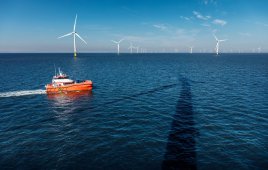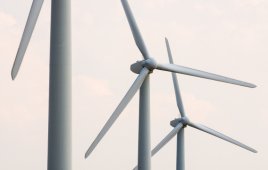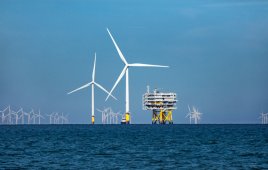Expanding the amount of power generated by wind projects and other renewables will be a task likely to span the next few decades. This is good news for engineering companies because the work will involve a wide range of disciplines. General service companies, those that can provide, architectural, mechanical, electrical, and construction services, seem poised for prime-contractor status. And style – something easy on the eyes – may be as important as technical competence because no one wants a completed project to look like it was designed in the Soviet Union.
Of course, most any company that offers technical equipment will provide consulting and training to use it properly. A bolting company will supply a range of fasteners as well as the tools to tighten them, which could be several electric and hydraulic-powered wrenches. Encoder manufacturers can provide assistance selecting a new more reliable version to replace a failing one along with how to use new on-board diagnostic features.
One construction firm highlights trends in several engineering services with a transmission section and a right-of-way group leading the project’s land-acquisition effort. The project involves acquiring easements needed to construct, operate, and maintain the transmission line. The company’s Right-of-Way Manager also serves as the project manager for it portion of CapX2020. She explained that the company’s scope of work involves putting up many miles of 230 and 345 kV lines that will cross 1,200 parcels of land owned by 5,000 landowners.
The project size requires the attention of 13 staff members. The contractor also employed three additional consulting firms to help with acquisition.
Acquiring land involves several steps, the first of which is obtaining titles and creating a landowner list. Agents make initial contacts and meet personally with each landowner along the project route. Part of the process is also coordinating alignment shifts, local permitting, appraisal and appraisal review, and condemnation assistance. Company agents present offers in-person and work with landowners to be certain that each has the necessary information to make an informed decision of whether they should sign or proceed otherwise.
Working with landowners is one set of challenges. Working with national codes presents others and highlights the trend of how technology often races ahead of standards and conventions. For example, a particular construction company had been active building the wind industry on projects throughout the U.S. and Canada. While working on support construction for wind farm substations, two engineers came across situations in which the National Electrical Code (NEC) can and should be applied to wind-farm collector, substation design. However, little documentation existed to provide guidance applying the NEC.
The company says the engineers took matters into their own hands by pooling the lessons each had learned through the different projects and collaborated on a white paper called “Applying the National Electrical Code to Substations.” The paper offers engineers discussion on safeguarding people and equipment during low-voltage, single-phase (600V or less) substation designs. Its abstract describes it as “a discussion of the NEC and NESC design considerations as applied to utility substations, including working clearances, cable tray, cables, conduit, conduit fill, and station services in electrical equipment enclosures.”
The extent to which the code applies to substation applications is dictated by the authority having jurisdiction, engineering judgment, and by client specification. Failure to comply with the rules could result in an installation that does not sufficiently protect personnel, or equipment, or both.
Utility substation design typically falls under the jurisdiction of the National Electrical Safety Code (NESC), though it does not specifically address utilization wiring as the NEC does. The engineers say the NEC can be used as a best practice in some applications within electrical equipment enclosures, such as AC station service design, wiring methods and practices, and installation and selection of cables and raceways. Recent modifications and additions to the 2012 revision cycle of the NESC and the 2011 NEC revision, coupled with experience in the wind industry, dictates a reevaluation of certain NEC applications in substation design. WPE
Filed Under: O&M, Training




Will some one direct me to the ‘Scope of Work’ legends used in toolkit
1. use this link: https://www.windpowerengineering.com/wind-project-map/.
2. click on a state and at the bottom of the page, wind projects will appear.
3. click on the desired project and the scope of work will be displayed on the right-hand side.
Let me know if you need anything else!